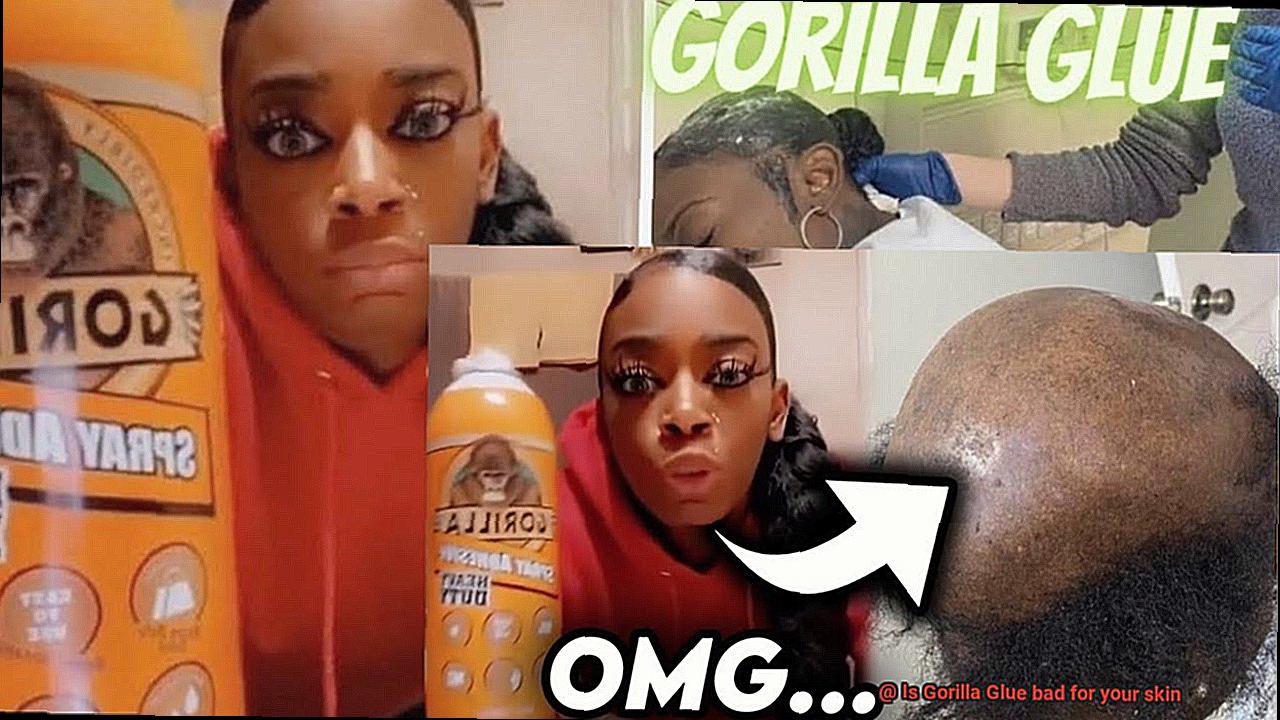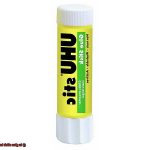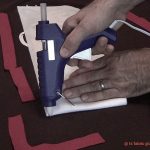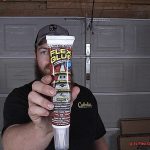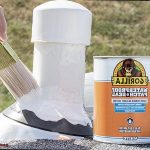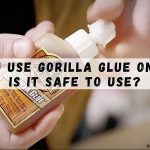Picture this: you’re knee-deep in a DIY project, and suddenly, disaster strikes. Your only hope? Gorilla Glue, the superhero of adhesives. With its unbeatable strength and versatility, it’s no wonder this stuff has become a staple for fixer-uppers everywhere. But here’s the catch – have you ever wondered what happens if this mighty glue comes into contact with your skin?
In today’s blog post, we’re tackling the sticky issue of Gorilla Glue and its potential effects on your skin. Sure, it’s great for fixing things, but let’s face it – our skin wasn’t designed to be glued together. So, before you dive headfirst into your next project, let’s explore the risks involved when Gorilla Glue meets your precious epidermis.
We’ll break down the nitty-gritty details: the chemical composition of this adhesive powerhouse, common scenarios where people make mistakes with its application, and most importantly, how to protect yourself from any unwanted consequences. Because let’s be real – nobody wants their DIY dreams turning into a skin nightmare.
So grab your safety goggles and buckle up as we embark on a journey through the uncharted territory of Gorilla Glue and your skin. It’s time to arm yourself with knowledge so you can confidently navigate the world of DIY bliss without sacrificing your precious dermis along the way. Let’s get started.
What is Gorilla Glue?
Contents
- 1 What is Gorilla Glue?
- 2 What are the Ingredients in Gorilla Glue?
- 3 Is Gorilla Glue Safe for Skin Contact?
- 4 Symptoms of Irritation or Allergic Reactions from Gorilla Glue
- 5 How to Remove Gorilla Glue from Skin Safely
- 6 When to Seek Medical Attention after Contact with Gorilla Glue
- 7 Safety Guidelines for Using Gorilla Glue
- 8 Prevention Tips for Using Gorilla Glue
- 9 Conclusion
Gorilla Glue has earned its reputation as the go-to adhesive for those seeking unbreakable bonds and unparalleled versatility. Whether you’re a DIY enthusiast or a seasoned professional, this high-performance adhesive is designed to tackle a wide range of projects with exceptional strength and durability. In this article, we will explore the composition, types, advantages, and potential skin-related concerns associated with Gorilla Glue.
Composition and Types:
At the heart of Gorilla Glue lies its powerful bonding capabilities, thanks to its main ingredient: polyurethane. This innovative adhesive offers various types to suit different applications:
- Original Gorilla Glue: A moisture-activated polyurethane adhesive that expands into the material it’s applied to, creating an incredibly strong bond.
- Gorilla Super Glue: A cyanoacrylate adhesive that bonds instantly and sets quickly for immediate results.
- Gorilla Wood Glue: Specially formulated for woodworking projects, this adhesive provides a reliable bond on wooden surfaces.
- Gorilla Epoxy: A two-part epoxy adhesive that delivers an incredibly strong bond for both porous and non-porous surfaces.
Key Features and Advantages:
- Unrivaled Bonding Strength: Gorilla Glue is renowned for its ability to create permanent bonds between a wide variety of materials, including wood, metal, ceramic, stone, and more. It withstands heavy loads and extreme conditions, ensuring your connections stay intact.
- Versatility at Its Finest: From repairing broken household items to building furniture or even crafting jewelry, Gorilla Glue can handle diverse projects with ease. Its adaptability makes it an indispensable tool in any toolkit.
- Water-Resistant Properties: Although not completely waterproof, Gorilla Glue exhibits impressive resistance to moisture. This feature makes it suitable for both indoor and outdoor applications, where exposure to occasional splashes or humidity is a concern.
- User-Friendly Application: Applying Gorilla Glue is a breeze, thanks to the range of application methods available. Whether you prefer brushes, precision tips, or nozzle applicators, this adhesive offers convenience and ease of use.
Skin Concerns:
It’s important to exercise caution when handling Gorilla Glue, as it can cause skin irritation or allergic reactions. The adhesive bonds quickly and tightly to the skin, making it challenging to remove without causing further damage. If you experience redness, itching, swelling, or blisters after contact with Gorilla Glue, seek immediate medical attention. Healthcare professionals can provide appropriate treatment options, which may include using solvents or specialized products designed to dissolve the adhesive safely.
What are the Ingredients in Gorilla Glue?
At the core of this adhesive wonder lies polyurethane, a powerful polymer that forms the backbone of Gorilla Glue. Through a chemical reaction between a polyol (an alcohol with multiple hydroxyl groups) and an isocyanate (a compound with -N=C=O functional group), polyurethane is born, creating a durable adhesive capable of withstanding the toughest challenges.
But wait, there’s more. Gorilla Glue doesn’t stop at polyurethane. It also boasts an array of additional ingredients that work synergistically to enhance its performance. Imagine solvents, stabilizers, and thickeners collaborating to create the ultimate glue experience.
Solvents play a crucial role in making Gorilla Glue easier to apply by thinning it out. This thinning effect allows for smooth spreading and workability, ensuring seamless application in any project or repair. Stabilizers are responsible for maintaining the glue’s effectiveness over time, preventing unwanted degradation and ensuring long-lasting adhesion. And let’s not forget about the thickeners. These components give Gorilla Glue its characteristic viscous consistency, preventing it from running or dripping when you find yourself in the midst of a sticky situation.
While Gorilla Glue is generally safe to use, it’s important to exercise caution when it comes to skin contact. The expansion properties that make this glue outstanding can also raise concerns if it comes into contact with your skin. To avoid any potential issues, it is recommended to wear gloves or use a barrier cream when working with Gorilla Glue.
And always remember, safety should be your top priority. Take the time to read and follow the instructions provided by the manufacturer for a hassle-free glue experience.
Is Gorilla Glue Safe for Skin Contact?
Accidentally getting Gorilla Glue on your skin can be a sticky situation, and you might be wondering if it’s safe for your skin. Let’s dive into the facts to determine if Gorilla Glue products are safe or hazardous when used on the skin.
The potential skin hazards of Gorilla Glue can be attributed to one of its main ingredients – polyurethane. Polyurethane is a type of plastic that can form a strong bond with the skin. While this is impressive in terms of adhesive power, it can lead to irritation and allergic reactions when it comes into contact with delicate skin.
The severity of the reaction varies depending on an individual’s sensitivity to the chemical and the duration of skin contact. Some people may experience mild symptoms like redness, itching, and swelling, while others may develop more severe reactions such as blisters and burns.
It is crucial to note that Gorilla Glue is not meant to be applied directly to the skin. The packaging and instructions clearly state that it should be kept away from the skin and eyes. However, accidents happen, so if you do get some glue on your skin, don’t panic.
The first step is to wash the affected area thoroughly with soap and water. This will help remove any residue and minimize further damage. Avoid using solvents or harsh chemicals, as they can worsen the reaction. If the symptoms persist or worsen, seeking medical attention is recommended. A healthcare professional can provide appropriate treatment and advice based on the severity of the reaction.
To prevent this sticky situation altogether, it’s wise to wear protective gloves when handling Gorilla Glue. These gloves act as a barrier between your skin and the adhesive, reducing the risk of direct contact and potential allergic reactions.
Symptoms of Irritation or Allergic Reactions from Gorilla Glue
Gorilla Glue, the superhero of adhesives, can work wonders when it comes to bonding materials. However, its powerful nature can also wreak havoc on your skin, causing irritation or allergic reactions. If you’re a DIY enthusiast, a crafty creator, or just someone who loves fixing things around the house, it’s important to be aware of the potential symptoms that could arise from using Gorilla Glue.
The main culprit behind these potential skin issues is polyurethane, a plastic that gives Gorilla Glue its incredible strength. Unfortunately, this mighty adhesive can also be a troublemaker when it comes into contact with your delicate dermis.
So, what should you be on the lookout for? The symptoms may vary from person to person, but here are some common signs of irritation or allergic reactions from Gorilla Glue:
- Redness and swelling: Your skin may turn into a fiery shade of red and swell up like a blowfish after encountering Gorilla Glue. It’s a clear indication that your skin is not happy with this adhesive invasion.
- Itching and burning: That irritating itchiness and burning sensation you feel on your skin after a run-in with Gorilla Glue? That’s not just your imagination playing tricks on you. It’s your body’s way of screaming, “Hey, something’s not right here.”
- Rash or hives: Some unfortunate souls may develop a rash or hives after coming into contact with Gorilla Glue. These raised bumps on the skin can be itchy, painful, and downright annoying.
- Blisters: In more severe cases, blisters may form on the skin. These fluid-filled sacs can be painful and may take some time to heal.

But wait, there’s more. If Gorilla Glue accidentally finds its way into your eyes (ouch.), you may experience symptoms such as redness, itching, watering, and even blurred vision. If this happens, don’t delay – seek immediate medical attention.
Now, let’s talk about the big one – allergic reactions. While they are rare, some people can develop an allergic reaction to Gorilla Glue. This can manifest as difficulty breathing, chest tightness, swelling of the face or throat, and dizziness. Yikes. An allergic reaction is a medical emergency, so don’t hesitate to call for help if you experience these symptoms.
Even if you’re not allergic to Gorilla Glue, it can still irritate your skin. The chemicals in the glue can cause discomfort and irritation, so it’s essential to take precautions when using it and discontinue use if any symptoms arise.
How to Remove Gorilla Glue from Skin Safely
Accidentally getting Gorilla Glue on your skin can be a frustrating experience. Gorilla Glue is a super strong adhesive that bonds various materials together, but it can also adhere to skin and cause irritation, discomfort, and even burns. In this guide, we will explore safe and effective methods to remove Gorilla Glue from your skin without causing harm.
Act Quickly and Stay Calm:
The first step in removing Gorilla Glue from your skin is to stay calm and act quickly. The longer the glue stays on your skin, the harder it becomes to remove. As soon as you notice the glue on your skin, take immediate action.
Gently Wash with Soap and Warm Water:
Start by gently washing the affected area with soap and warm water. This simple step helps to loosen the glue and make it easier to remove. Use a soft cloth or sponge to gently rub the glue off your skin, being patient and repeating the process until the glue starts to come off.
Soak in Warm Soapy Water:
If the glue is being stubborn, soak the affected area in warm soapy water for about 15 minutes. This additional step softens the glue further and facilitates its removal. After soaking, try gently rubbing or peeling off the glue using a soft cloth or your fingernails.
Use Acetone or Nail Polish Remover:
If the glue is still not budging, you can try using a small amount of acetone or nail polish remover. Apply it to a cotton ball or pad, then gently rub it onto the affected area. Let it sit for a few minutes to dissolve the adhesive, then wipe or peel off the softened glue. However, exercise caution as acetone can irritate the skin. Test a small patch first and avoid using it on broken or irritated skin.
Try Oils as a Natural Alternative:
For those who prefer a natural approach, oils such as coconut oil, olive oil, or baby oil can be used to soften the glue. Apply the oil directly to the affected area and gently massage it in circular motions. The oil helps break down the adhesive, making it easier to remove.
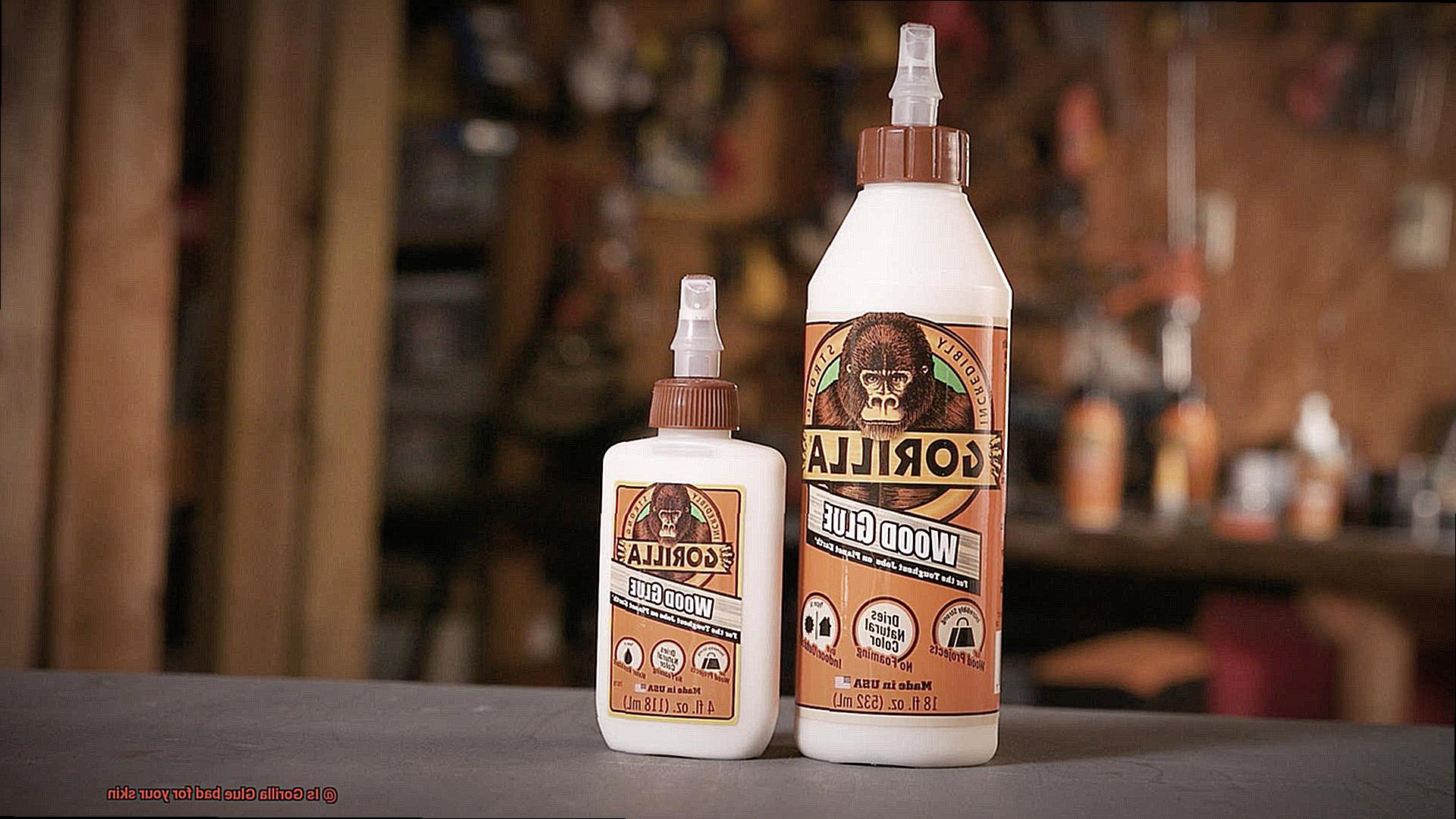
Clean and Moisturize:
Once you have successfully removed the Gorilla Glue, thoroughly clean the skin again with soap and water to remove any residue. Afterward, apply a soothing moisturizer or aloe vera gel to alleviate any discomfort caused by the glue.
When to Seek Medical Attention after Contact with Gorilla Glue
Accidentally getting stuck with Gorilla Glue can turn into a real sticky situation. This super-strong adhesive is known for its bonding power, but it can also bond to your skin if mishandled. In this guide, we’ll explore when it’s crucial to seek medical attention after contact with Gorilla Glue. We’ll also provide tips for managing mild skin irritation at home.
When to Seek Medical Attention:
Adhesion to a large area of the skin or covering a significant portion of the body: If Gorilla Glue has spread over a sizeable area, it’s time to call in the experts. Seek medical attention to prevent potential complications and receive proper treatment.
- Severe pain or discomfort: If you’re experiencing intense agony or discomfort at the contact site, don’t tough it out. Consult a medical professional who can assess the damage and suggest suitable pain relief options.
- Signs of an allergic reaction: Although rare, allergic reactions to Gorilla Glue are possible. If you notice swelling, hives, or difficulty breathing after contact, seek immediate medical attention. These symptoms could indicate a severe allergic reaction that requires prompt treatment.
- Contact with eyes, mouth, or mucous membranes: When Gorilla Glue meets sensitive areas like your eyes, mouth, or mucous membranes, don’t delay seeking immediate medical attention. These delicate areas demand specialized care and prompt intervention.
- Inability to remove the glue easily: If gentle washing and home remedies fail to loosen the grip of Gorilla Glue on your skin, resist the urge to forceful removal. Instead, seek medical attention. Healthcare professionals have access to specialized adhesive removers that can safely dissolve the glue without causing further harm.
Managing Mild Skin Irritation at Home:
If you’re only dealing with mild skin irritation from Gorilla Glue, you can try the following remedies at home:
Gently wash the affected area with soap and water to remove any lingering glue.
Apply a mild moisturizer or petroleum jelly to soothe the irritated skin.
Safety Guidelines for Using Gorilla Glue
Gorilla Glue is renowned for its exceptional strength and durability, making it a popular choice for various projects. However, it is crucial to prioritize safety when using this powerful adhesive. In this article, we will provide you with comprehensive safety guidelines to ensure the proper and safe use of Gorilla Glue.
Read and Follow Instructions:
Before using Gorilla Glue, carefully read and follow the instructions provided on the packaging. These guidelines are specifically designed to ensure safe handling and usage, so it is essential to adhere to them.
Wear Protective Gloves:
To protect your skin from potential irritation or allergic reactions, always wear protective gloves when working with Gorilla Glue. This adhesive can cause harm upon direct contact with the skin, so it is prudent to take this precautionary measure.
Rinse Off Accidental Skin Contact:
If Gorilla Glue comes into contact with your skin, do not panic. Instead, immediately rinse the affected area with soap and water. Avoid forcefully pulling or picking at the glue, as this may cause further damage.
Seek Medical Attention for Ingestion or Eye Contact:
In the unfortunate event of accidental ingestion or eye contact with Gorilla Glue, seek immediate medical attention. Ingesting or getting the adhesive in your eyes can pose serious health risks, and prompt medical assistance is vital.
Use in a Well-Ventilated Area:
Ensure proper ventilation when using Gorilla Glue to prevent inhaling potentially harmful fumes. It is advisable to work in a well-ventilated area or consider using a fan or opening windows to maintain fresh air circulation.
Store Properly:
To avoid accidents and maintain the adhesive’s effectiveness, store Gorilla Glue in a cool, dry place away from direct sunlight or heat sources. It is crucial to keep it out of reach of children and pets.
Check Compatibility:
Before using Gorilla Glue, verify its compatibility with the materials you are working with. This adhesive may not be suitable for use on certain surfaces such as polyethylene or polypropylene plastics. Always check the label or consult the manufacturer’s guidelines for compatibility information.
Dispose of Properly:
When it is time to dispose of Gorilla Glue, do so responsibly. Avoid pouring it down drains or throwing it in regular trash bins. Contact your local waste management authorities to learn about the proper disposal methods.
Prevention Tips for Using Gorilla Glue
Gorilla Glue is an incredibly strong adhesive that can work wonders in bonding materials together. However, it’s important to take precautions to protect your skin from potential harm. In this article, we’ll explore key prevention tips to ensure a safe and enjoyable experience when using Gorilla Glue.
Wear Protective Gloves:
The first and most crucial tip is to always wear protective gloves when working with Gorilla Glue. These gloves act as a barrier, minimizing the chances of the glue coming into direct contact with your skin. By wearing gloves, you can work confidently and worry-free, knowing that your skin is protected from the powerful adhesive.
Cover Up with Long Sleeves and Pants:
In addition to gloves, it’s recommended to wear long sleeves and pants when using Gorilla Glue. Accidental spills or splashes can occur, and these extra layers of protection will shield your skin from any potential harm. By covering up, you create an additional barrier that can prevent the glue from reaching your skin.
Work in a Well-Ventilated Area:
Gorilla Glue releases strong fumes that may irritate your skin, eyes, and respiratory system. To avoid discomfort or breathing difficulties, always work in a well-ventilated area. Open windows or use fans to circulate fresh air, ensuring a safe environment for your project. Breathing in fresh air will not only protect your skin but also enhance your overall experience.
Follow Manufacturer’s Instructions:
Reading and following the manufacturer’s instructions is crucial for using Gorilla Glue safely. These instructions provide guidance on application methods, drying time, and any specific safety precautions mentioned on the product label. By following these guidelines, you can minimize the risk of accidental skin contact and ensure that you are using the glue correctly.
Gentle Washing for Skin Contact:
If Gorilla Glue comes into contact with your skin, remain calm and avoid panicking. Trying to pull or peel off the glue can cause further damage. Instead, gently wash the affected area with warm soapy water. This will help loosen the glue so that it can be removed more easily. Patience and a gentle touch are key when dealing with accidental skin contact.
Conclusion
Gorilla Glue can be harmful to your skin.
It contains strong adhesive properties that can cause irritation, redness, and even chemical burns. Applying Gorilla Glue directly to your skin is not recommended as it can lead to serious consequences.
The glue’s powerful bond is designed for materials, not for human skin. If you accidentally get Gorilla Glue on your skin, it is important to act quickly by washing the affected area with soap and water.
Instead, seek medical attention if necessary.

